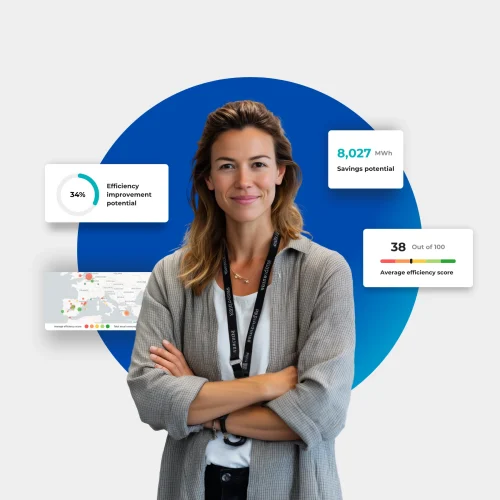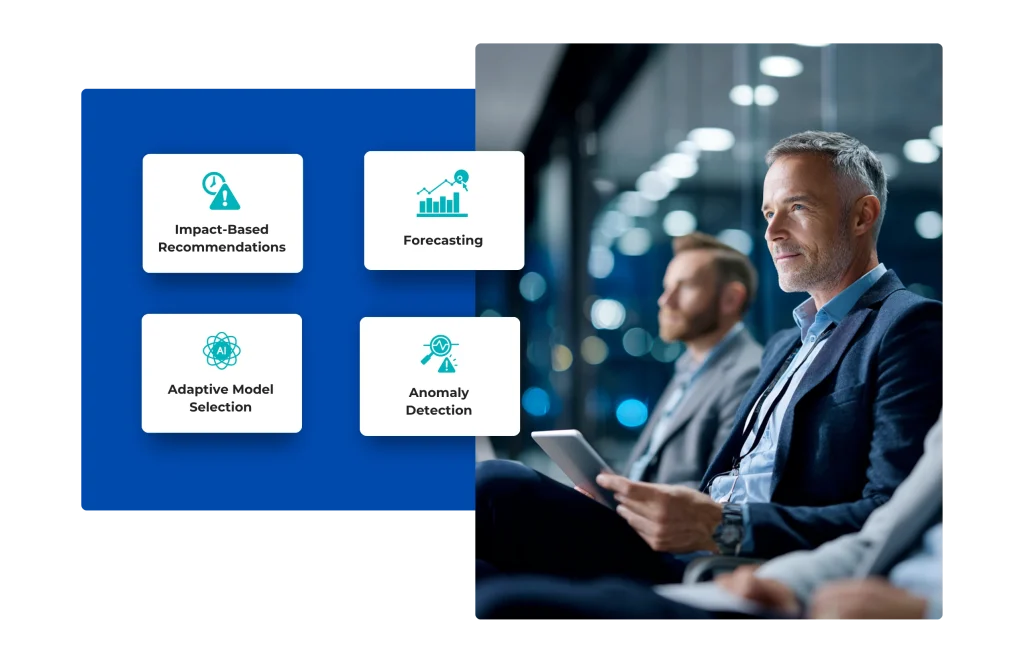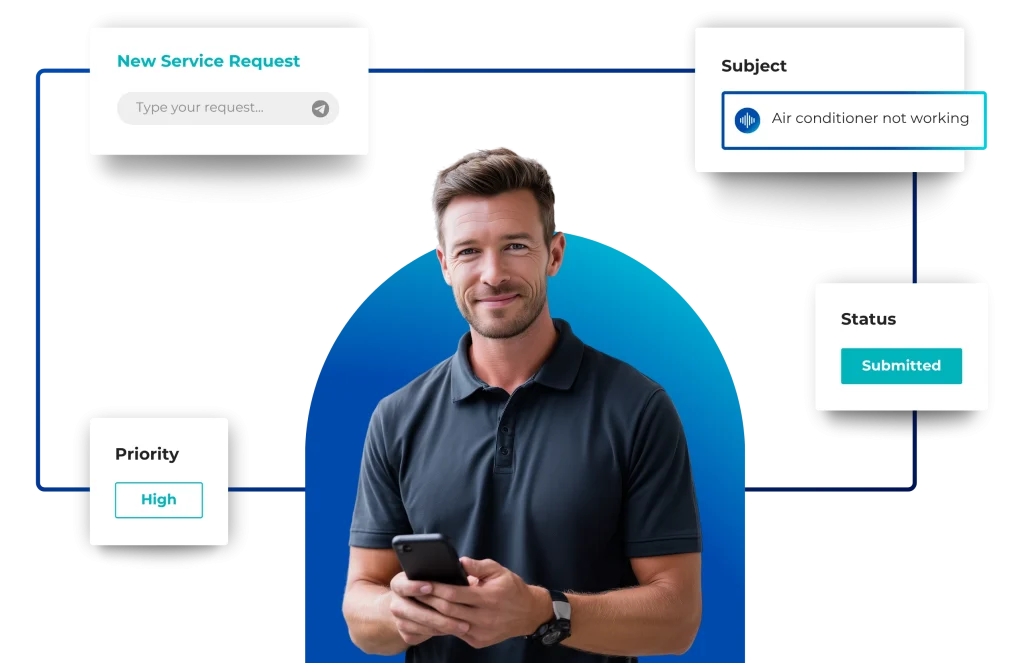
AI for Building Management
Built to Help, Not to Hype
At Spacewell, we take a grounded approach to AI. It’s not about buzzwords — it’s about building tools that help facility and energy teams save time, spot issues earlier, and act with confidence. Since 2021, we’ve embedded AI directly into our software, where it solves real problems with tested models that keep improving.
Practical Applications of AI in Building Management
We use AI only when it offers a clear advantage over traditional methods. Real-world applications include:
- Anomaly detection: AI monitors energy and occupancy data 24/7 to highlight irregularities.
- Impact-based recommendations: Alerts show not just what’s wrong, but what action to take.
- Forecasting: Predict usage trends for energy, comfort, and occupancy across systems.
- Adaptive model selection: Spacewell picks the most accurate AI model for the task—automatically.
You stay in control, backed by more reliable data and insights.
Responsible AI Innovation
As part of the Nemetschek Group, Spacewell is at the forefront of AI for the built environment — through deep collaboration with the AI & Data Innovation Hub. Our shared R&D explores:
- When and where AI offers better value than manual or rules-based approaches.
- How to improve forecasting precision and anomaly clarity.
- The ethical and transparent use of machine learning in operational settings.
Ethical and Transparent AI
Spacewell’s approach to AI centers on the following guiding principles:
- Transparency: Clear communication on when and why AI is used.
- Accountability: We review, audit, and improve model performance regularly.
- Usability: Features are designed for workplace and energy teams, not data scientists.
- Fairness: Datasets and models are tested to minimize bias and ensure accuracy.
Spacewell engineers regularly review model performance and re-train with diverse datasets to ensure balanced, accurate, and fair outcomes.
Examples of Spacewell AI in Use
24/7 Anomaly Detection
Our AI watchdog monitors data flows from building systems, meters, and sensors 24/7. When usage deviates from expected patterns (e.g. spikes in water, drop in occupancy, HVAC inefficiency), it flags the event and calculates its likely impact.
This frees up your team from constant manual checks and lets them focus on solving problems, not searching for them.

Forecasting Engine
We forecast consumption, generation, and demand across multiple buildings and data types — from electricity to temperature to CO₂.
How does it work?
- Models are retrained daily for peak accuracy
- Multiple AI models are tested in parallel
- The one with the lowest margin of error is selected

Seamlessly Embedded — No Extra Module Needed
AI Built Into the Experience
You won’t need to activate AI or manage separate tools. Our intelligence layer is built-in where it’s useful — from dashboards to alerts. It just works, so your team can focus on what matters.
What’s Next: AI for your Evolving Building Management Needs
We’re actively developing new AI-powered features to:
- Prioritize cleaning and maintenance based on real usage.
- Analyze occupancy trends to optimize workplace design.
- Predict HVAC adjustments for better comfort and efficiency.
- Score ESG metrics with smarter, context-aware models.

Stay in the Loop
Want to be the first to know about our latest AI developments and smart building innovations? Sign up to receive product updates, best practices, and expert insights.









